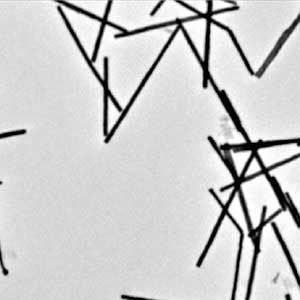| Feb 25, 2019 | |
Liquid has structure, which may be key to understanding metallic glass(Nanowerk News) Researchers have found that liquid has structure in certain circumstances, and that this structure significantly influences the mysterious and complex formation of metallic glasses. |
|
| Moldable like plastic but strong like metal, metallic glasses are a relatively new class of materials made from complex, multicomponent alloys. Their unique properties come from how their atoms settle into a random arrangement when they cool from a liquid to a solid. But controlling this process — and fully capitalizing on these materials — has proved tricky, since so much is still unknown about what happens in the cooling process. | |
| A new study, published in Nature Communications ("Supercluster-coupled crystal growth in metallic glass forming liquids"), provides some answers. | |
| The researchers, led by Judy Cha, the Carol and Douglas Melamed Assistant Professor of Mechanical Engineering & Materials Science, found that metallic glasses in the liquid state will periodically form crystalline structures — their freely moving atoms arrange themselves into certain patterns. This happens at the interface of the liquid and the solid — that is, when the molten material has partially solidified, the adjacent liquid forms a structure that causes the solid portion to grow up to 20 times faster than it otherwise would. | |
 |
|
| Image from transmission electron microscope of metallic glass nanorods. (Image: Judy Cha) | |
| “We’re highlighting that gap in our knowledge,” said Cha, who’s also a member of Yale’s Energy Sciences Institute on the West Campus. “The field of crystallization is very mature, but the fundamental questions remain open.” | |
| For the study, the researchers used transmission electron microscopy to observe in real time the crystallization process in nanoscale-sized rods of metallic glass. Being able to observe the material at the atomic scale, they found that the metallic glass would crystallize at a rate of 15 to 20 atoms per second if the liquid formed a structure. When it didn’t have a structure, the rate was about three to five atoms per second. | |
| Yujun Xie, a Ph.D. candidate in Cha’s lab and lead author of the paper, said the next step is to broaden the applications of what they’ve learned. | |
| “How does our study give some insight into the formation of other materials, and how can we engineer other materials’ formation and structure?” he said. |
| Source: By William Weir, Yale University | |
|
Subscribe to a free copy of one of our daily Nanowerk Newsletter Email Digests with a compilation of all of the day's news. |
